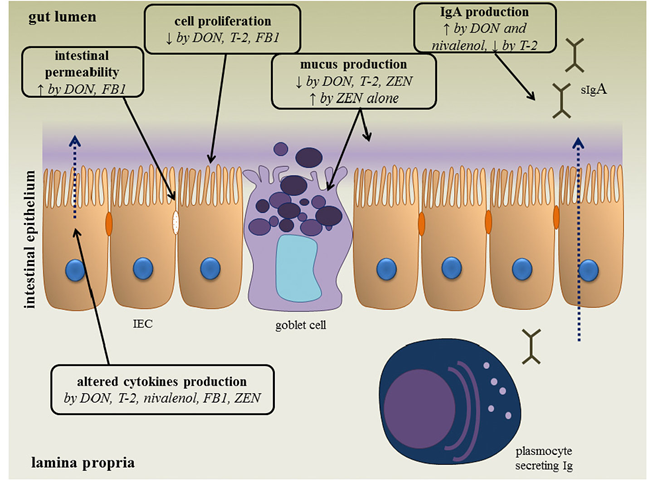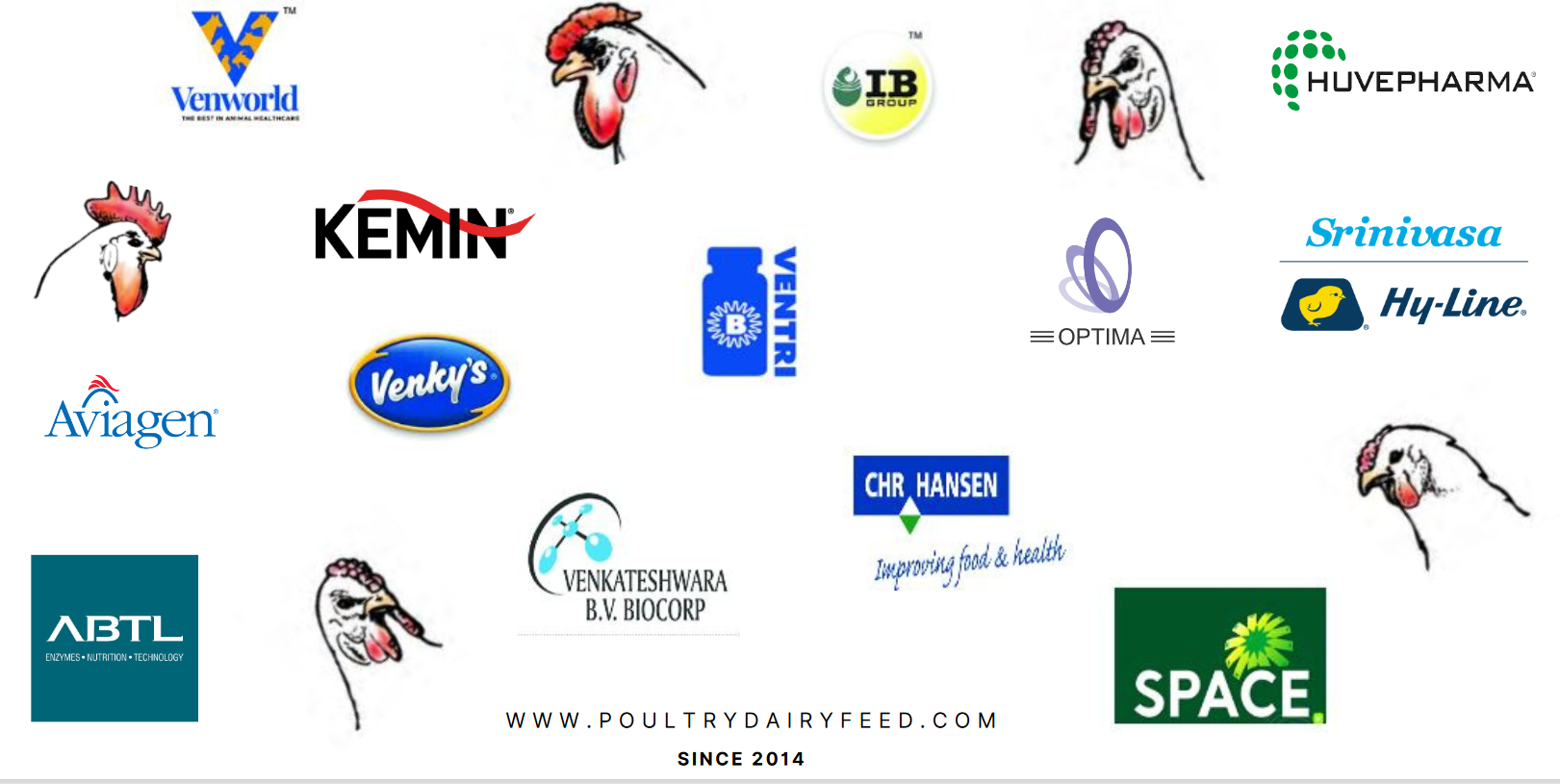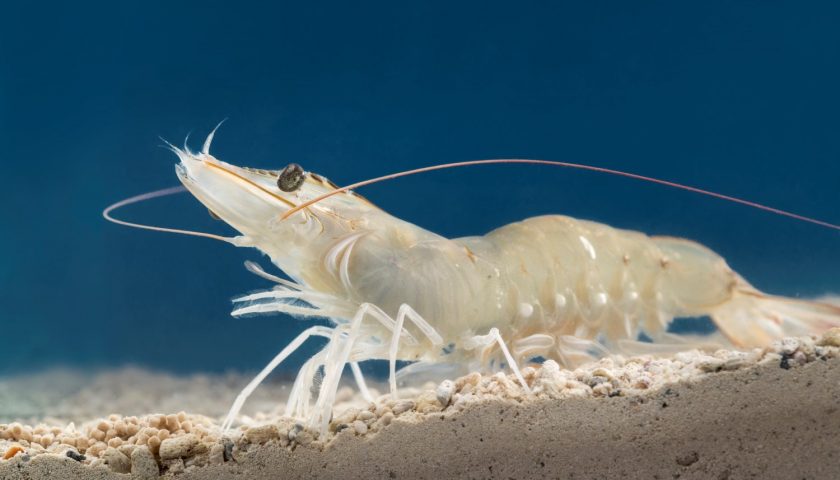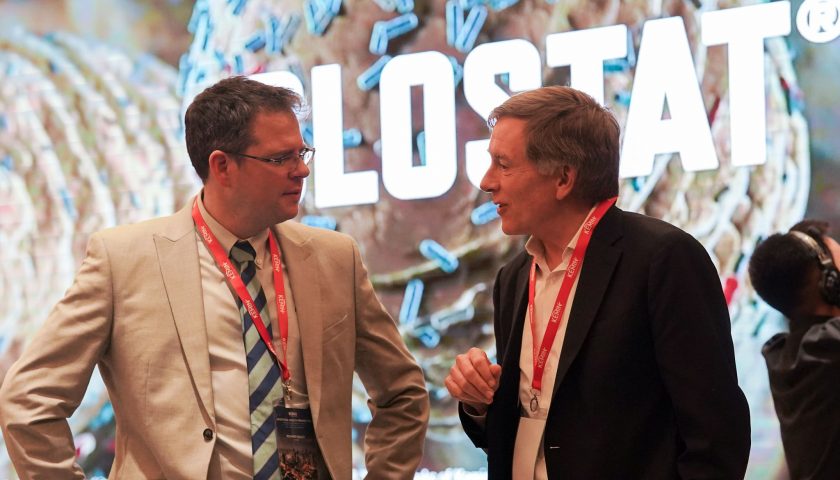Lorran BaeumleGabardo
The negative impacts of mycotoxins in poultry can be far-reaching, decreasing gastrointestinal integrity, immunity and performance in broilers and resulting in economic losses.
Given the high rates of mycotoxin in poultry feed, a mycotoxin risk management strategy is needed to protect fattening animals in all phases in order to reduce the challenges in the animal and ensure profitability of production.
Poultry producers frequently ask: What is the real impact of mycotoxins on the broiler’s productivity? What sounds like an easy question is, in the case of mycotoxins, unfortunately not so easy to answer.
Three key considerations can help you evaluate the impact of mycotoxins on your broilers’ productivity:
- Contamination levels in the finished feed
- Direct and indirect effects of mycotoxins in the animal
- Performance parameters
Contamination in the broiler’s feed
Mycotoxins are frequently found in poultry feed. According to the BIOMIN World Mycotoxin Survey, more than 8,000 samples of finished poultry feed tested positive for mycotoxins in the last five years (2016 – 2020). A closer analysis of this data shows that 92% of these samples are contaminated with more than one mycotoxin, it can be founded as much as 40 to 50 mycotoxins in the same sample. Therefore, it is of utmost importance to interpret the whole picture and not just look at the effects of a single mycotoxin if you need to evaluate the risk in a broiler production (Figure 1).

Figure 1. Mycotoxin presence in poultry finished feed (2016 -2020). A) Co-occurrence of mycotoxins. B) Mycotoxin occurrence and risk for broiler: % of positive samples for the respective mycotoxin are shown in the bars while maximum contamination found is expressed inside the broiler image (ppb). The colours express the risk level for broilers, red being high risk and orange indicating moderate risk. (Source: BIOMIN World Mycotoxin Survey)
Testing the finished feed and/or their ingredients helps to evaluate the risk for the animal’s health. The frequent presence of mycotoxins triggers the immune system of the animals, consequently reducing the performance of the flocks, what can be translated as a loss of profit for the poultry producers.
Mycotoxins in the broiler itself
Visible clinical signs in poultry such as fatty liver, beak erosions or cystic oviduct are not always clearly identifiable in broilers under field conditions, for two main reasons: First, the short life cycle of broilers means that problems may lurk within the animal but not have time to manifest outwardly. Second, the combined effects of more than one mycotoxin make the diagnosis of a mycotoxicosis more difficult. However, the major impacts of mycotoxins on immunity, inflammation, oxidation and gut health in poultry husbandry has been clearly proven in scientific trials.
Special attention should be paid to:
- Mycotoxins’ impact on gut health: It is well proven that mycotoxins, especially deoxynivalenol (DON) and fumonisins (FUM), affect several aspects of intestinal integrity. A meta-analysis (Grenier and Applegate, 2013) showed a clear influence of DON and FUM:
- On the morphological structure of intestinal epithelium by destroying the villus;
- By reducing the tight-junctions between the intestinal cells, opening up the intestinal barrier to the bloodstream;
- By modulating the local immune response and the microbiota profile.
Collectively, these effects can compromise several intestinal functions, mainly reducing the absorption surface for nutrients and consequently harming digestion. Moreover, by increasing the permeability of the intestinal barrier, the entrance for pathogens, anti-nutritional factors and other toxins into circulation is facilitated. (Figure 2).

Figure 2. The effect of DON, nivalenol, fumonisin B1 (FB1), T-2 toxin and zearalenone (ZEN) on the intestinal epithelium. They alter the different intestinal defense mechanisms including epithelial integrity, cell proliferation, mucus layer, immunoglobulins (Ig), and cytokine production. (Source: Antonissen et al., 2014)
- Mycotoxins as predisposing/trigger factors for health issues: Antonissen et al (2014) evidenced that low to moderate doses of different Fusarium mycotoxins (DON, nivalenol, fumonisins, t-2 toxin and zearalenone) are predisposing factors to several important diseases in poultry production such as coccidiosis, salmonellosis, necrotic enteritis and colibacillosis. Combinations of DON, fumonisins and zearalenonewere identified as reducing the Eimeria-induced immune response and the efficacy of the anti-coccidial treatment. The necrotic enteritis challenge is also increased when fumonisins and DON are present (Antonissen et al., 2012 and Antonissen et al., 2015). Evidence of a higher susceptibility to Salmonella typhimurium was also reported in the presence of DON and T2, suggesting that these compounds may modulate the bacterial metabolism. E. coli pathogenesis is influenced by fumonisins, stimulating intestinal colonization and translocation of E.coli.
- Mycotoxins triggering the immune system and stressing the liver, with a cost on nutrients and energy for growth: It is known that the liver is directly affected by most mycotoxins, causing a loss of function of the hepatocytes. In broilers, a visible fatty degeneration and an increase of approximately 15% in the liver weight were reported. This disturbance reflects an increased cost of nutrients and amino acids, specially methionine which is the first limiting amino acid for broilers. To overcome this challenge a possible action would be to adjust the nutritional levels of the diet to the mycotoxin presence. By adjusting the formulation, you do not overcome the problem. You may alleviate the issue in the short term, however, this strategy results in a higher cost for the diets. Moreover, the dynamic profile of the mycotoxin contamination means it is not feasible long-term. The right approach is to use a mycotoxin deactivator in order to prevent nutritional losses without trying to guess how to manage nutritional changes in the diet.
- Mycotoxins inducing vaccination failure due to interference with the immune system: Modulation of immune response is one of the main modes of action of mycotoxins. They silently interfere with other sanitary aspects, such as the vaccination efficacy. Mycotoxins act as a contributing factor to reduce the immunity for viral diseases in broilers (Kamalavenkatesh et al., 2005; Hanif and Muhammad, 2015 and Yunus et al., 2012). Ochratoxin, DON, T2, cyclopiazonic acid significantly reduced the antibody titer for Newcastle disease virus (NDV), infectious bronchitis virus (IBV), infectious bursal disease virus (IBDV), and hydropericardium syndrome (HPS). This vaccination failure increases the susceptibility of birds to infectious diseases that could be avoided under normal conditions.
- Mycotoxins’ ability to facilitate bacterial contamination of carcasses: As previously described, mycotoxins are able to reduce the thickness of the intestinal epithelium resulting in a ‘leaky gut’. Once the junctions between intestinal cells are disrupted, an exchange of molecules happens between the intestine and the bloodstream. This condition can influence the carcass contamination in the slaughter house by:
- The excess of proteins in the intestinal lumen supporting the proliferation of pathogenic bacteria such as E.coli, C. perfringens and Salmonella sp,
- The higher amount of water in the gut lumen leading to more leaky excreta and higher contamination in the slaughterhouses,
- The damaged intestinal junctions letting pathogenic bacteria enter into blood circulation.
Therefore, preventing the establishment of a ‘leaky gut’ can be correlated with the reduction of economic losses and enhancement of food security in the poultry industry.
Impact of Mycotoxins on Broiler’s Performance Parameters
Performance is still considered one of the most important parameters in evaluating the success of the poultry production. Through this perspective, it is proven that mycotoxins can negatively impact zootechnical parameters in a broiler farm. A data compilation of scientific trials has shown that the presence of mycotoxins in poultry diets significantly reduced (P < 0.05) feed intake by 12% and body weight gain by 14%, resulting in an impaired feed conversion ratio of 7% when compared with non-contaminated groups (Andretta et al, 2011). This is mainly attributed to a diminished feed intake resulting in a lower protein deposition efficiency.
Furthermore, preliminary results from a cooperation project with the University of Ghent (Antonissen et al., 2018) show a synergistic negative effect between a dysbiosis challenged diet and additional DON (5 mg/kg) and fumonisins (20 mg/kg) on broilers’ performance. Interestingly, this data also evidence that the decreased performance even is more evident in the final phase, reinforcing the impact of mycotoxins in the growth parameters in the last period of broiler’s life cycle (Figure 3).

Figure 3. Performance parameters in day 39 of broiler chickens fed either a negative control, dysbiosis control, deoxynivalenol contaminated dysbiosis or a fumonisin contaminated dysbiosis diet. Bars represent means for the 7 replicates (pens) per treatment ± SD. Within the same period, bars with different letters (a-b) differ significantly (P ≤ 0.05). (Source: Antonissen et al., 2018)
An example of a realistic outcome also comes from recent data of Kolawole et al. (2020). In his long-term evaluation (18 successive trials) of a commercial farm, it was shown that natural contamination with levels below the EU recommendations for mycotoxins has a significant impact of 2.5 points in FCR (Figure 4), confirming the synergistic effects of the mycotoxins (fumonisins, zearalenone, DON and DAS) and the decreased broiler performance in commercial conditions.

Figure 4. The difference between FCR (black line) in high and low contaminations of mycotoxins (colored lines) in broilers (Adapted from Kolawole et al., 2020).
- The negative impacts of mycotoxins can be far-reaching, decreasing gastrointestinal integrity, immunity and performance in broilers and resulting in economic losses. Due to the frequent occurrence of mycotoxins in poultry feed, a mycotoxin risk management strategy is needed to protect fattening animals in all phases in order to reduce the challenges in the animal and ensure profitability of production.





